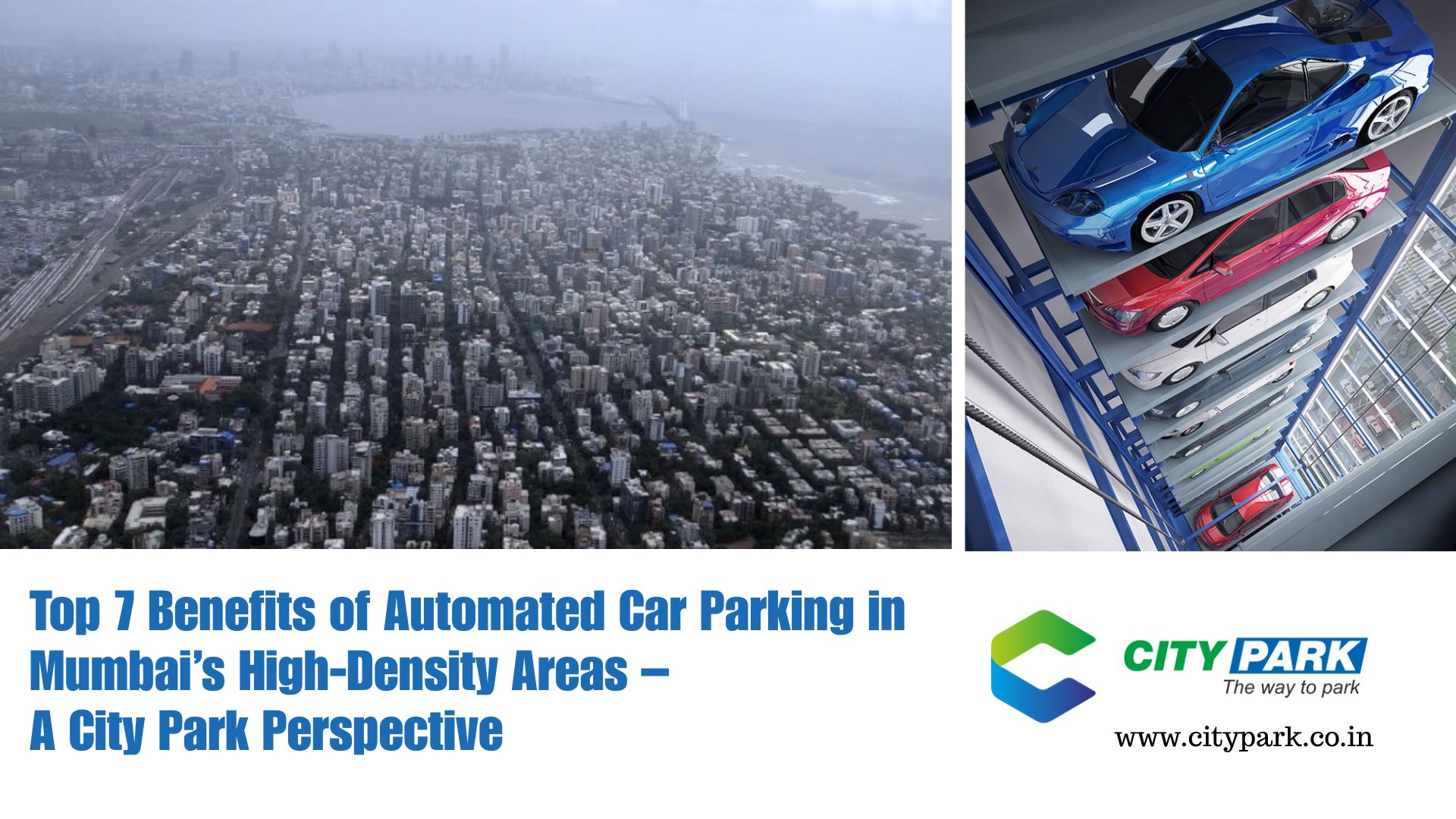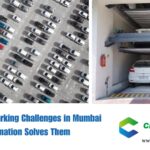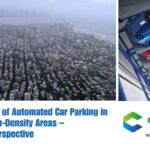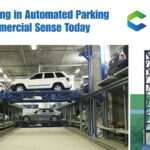In today’s fast-paced urban life, safety and convenience go hand in hand. From the moment a driver enters a parking facility to the second they retrieve their vehicle, every touchpoint matters. And as cities become denser, vehicles grow smarter, and consumers more discerning — traditional parking systems are struggling to keep up.
Enter the era of Safety and Security 2.0, where technology takes the wheel. With advanced surveillance, touchless ticketing, and AI-based vehicle tracking, automated parking systems are no longer just about saving space — they’re about building trust, ensuring safety, and delivering peace of mind.
This blog explores how automation is transforming user confidence in parking systems — one intelligent feature at a time.
1. The New Age of Safety: Why Traditional Parking Isn’t Enough
For decades, parking lots have been considered passive spaces — just somewhere to leave your car. But as urban living intensified, new challenges emerged:
- Vandalism and theft in unmonitored areas
- Human errors in manual ticketing and vehicle handling
- Limited surveillance coverage, leaving blind spots
- Safety risks during late-night parking or retrieval
Modern consumers expect more than just convenience; they expect safety, transparency, and accountability.
Automated car parking systems are answering that call — powered by sensors, AI algorithms, and real-time monitoring. These systems not only park your vehicle with precision but also create a secure environment where both people and machines work in harmony.
2. Advanced Surveillance: The Eyes That Never Blink
One of the biggest breakthroughs in next-generation parking safety is intelligent surveillance. Gone are the days when CCTV cameras simply recorded footage. Today’s automated systems leverage AI-powered video analytics to actively monitor, detect, and prevent suspicious activities before they occur.
How It Works:
- 360° camera coverage: Modern automated parking towers are fitted with high-resolution, panoramic cameras that leave no blind spots.
- AI analytics: Machine learning models can detect unusual behaviors — such as forced entry attempts, erratic vehicle movement, or unauthorized personnel — and instantly alert security teams.
- Night vision and motion sensors: Enhanced infrared imaging ensures 24/7 visibility, even in low-light environments.
- Cloud-based data storage: Video data is securely stored and easily retrievable for audits or investigations.
The Result:
Every car is under constant, intelligent observation — not just monitored, but protected. For users, this translates into one thing: confidence. They know their vehicle isn’t just parked; it’s safeguarded.
3. Touchless Ticketing: Safety in Every Interaction
The pandemic accelerated the global demand for contactless solutions — and parking systems were no exception. Manual ticketing, payment booths, and paper slips not only wasted time but also created unnecessary touchpoints and potential health risks.
Touchless Parking 2.0: The Experience
Here’s how a modern, automated parking experience unfolds:
- License Plate Recognition (LPR): As a vehicle approaches the entrance, cameras automatically scan the license plate, logging the entry time digitally — no ticket needed.
- QR-Based Entry: Some systems use QR codes generated through mobile apps, enabling users to scan and enter seamlessly.
- Digital Payments: Payments are processed via UPI, digital wallets, or pre-linked accounts, eliminating queues and cash handling.
- Automated Exit: The same LPR or QR system identifies the vehicle at exit, calculates parking duration, and triggers automatic payment.
Benefits Beyond Hygiene
- Faster vehicle flow: Reduced wait time at entry and exit points.
- Error-free operation: No misplaced tickets, no human errors.
- Enhanced data tracking: Every entry, exit, and transaction is digitally recorded, adding an extra layer of transparency.
- User comfort: Drivers enjoy a smoother, contactless, and stress-free experience.
The Bigger Picture:
Touchless ticketing isn’t just about convenience — it’s a cornerstone of modern security. It minimizes human interference, reduces fraud, and ensures complete traceability, making parking smarter, cleaner, and safer.
4. AI-Based Vehicle Tracking: The Digital Shield
Imagine being able to monitor your car’s status — not just when parked, but during every step of its journey within an automated facility. That’s exactly what AI-powered vehicle tracking offers.
From Entry to Exit — Full Transparency
- Real-time tracking: Sensors and cameras follow the car’s movement through every level, ensuring precision handling by robotic lifts or pallets.
- Digital mapping: The system logs the exact bay or module where each vehicle is stored — instantly retrievable through mobile apps or kiosks.
- Instant notifications: Users can receive live updates — “Your car is being retrieved” or “Vehicle ready at the exit in 2 minutes.”
- Predictive AI maintenance: The same sensors monitor system performance, predicting potential issues before they affect safety or timing.
Why It Matters:
For customers, this means zero anxiety. The once-unseen back-end process of automated parking becomes visible, reliable, and trustworthy.
For operators, it means control and accountability — every vehicle is accounted for, every movement logged.
AI transforms parking from a mechanical process into a digitally orchestrated experience, balancing precision with security.
5. The Human Element in a Tech-Driven World
Ironically, automation’s greatest strength is not replacing humans — but protecting them.
In traditional parking, attendants and drivers face several risks — accidents during parking maneuvers, disputes over damages, or even confrontations in crowded lots. Automated systems remove these risks entirely.
How Automation Protects People:
- No manual driving inside the facility: Vehicles are parked by the system, reducing collisions and injuries.
- Restricted human access: Only authorized personnel can enter the automated zones, minimizing theft or tampering.
- Emergency override systems: In case of power failure or technical errors, smart systems trigger alerts and backups to ensure safety.
- Peace of mind for users: Knowing their car is handled by precision robotics — not rushed attendants — enhances confidence in the brand.
Automation ensures safety for both users and employees, creating an environment where trust is engineered into every interaction.
6. Data Security: Protecting Digital Trust
As parking becomes smarter, it also becomes more data-driven. Vehicle details, payment information, and even user patterns are stored digitally. This brings data security to the forefront of Safety 2.0.
How Smart Parking Systems Keep Data Safe:
- End-to-end encryption for transactions and data storage.
- Two-factor authentication (2FA) for app or account access.
- Secure cloud servers with regular backups and redundancy.
- GDPR-compliant privacy policies, ensuring users’ personal data is never misused or shared.
Cybersecurity is now as vital as physical safety — and the best automated systems are designed to protect both.
When users trust that their personal and vehicle data are safe, their overall confidence in the parking experience multiplies.
7. From Safety to Experience: Building Emotional Trust
Beyond all the hardware and software, what really matters is how users feel.
A parking system that operates flawlessly, anticipates user needs, and communicates transparently creates an emotional bond with its users.
Safety and convenience become part of the brand’s personality — something people associate with reliability and care.
Imagine walking into a parking facility that greets you with digital signage, guides your car automatically, assures you of surveillance coverage, and thanks you for visiting — all without human intervention.
That’s not just technology. That’s trust, engineered.
8. The Future of Parking Safety: What’s Next?
The evolution of parking automation has just begun. The next wave of Safety and Security 2.0 will bring even more intelligent innovations:
- Facial recognition and biometric access for ultra-secure entry.
- Drone-based surveillance for large parking zones or open spaces.
- Blockchain-enabled transparency in parking transactions and data sharing.
- Predictive AI alerts that can prevent system malfunctions or detect anomalies before they escalate.
- Integration with smart city grids, ensuring real-time coordination with traffic and emergency systems.
The ultimate goal?
To make parking so safe, seamless, and intelligent that users never have to think twice about where they park.
Conclusion: Trust, Reinvented Through Technology
Safety and security have always been central to human confidence — whether at home, on the road, or in a parking lot. But in the world of automation, safety isn’t just about physical protection anymore. It’s about transparency, control, and trust.
Advanced surveillance ensures that no activity goes unnoticed.
Touchless ticketing eliminates unnecessary contact and human errors.
AI-based tracking gives users visibility, reliability, and peace of mind.
Together, these innovations form the core of Safety and Security 2.0 — a world where parking is more than a necessity; it’s an experience built on precision, intelligence, and confidence.
In this new era of smart mobility, automation isn’t just transforming infrastructure — it’s redefining how safe we feel in everyday spaces. And that’s the real power of technology: not just moving vehicles, but moving trust forward.











